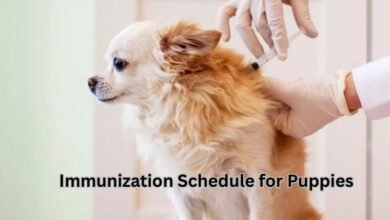
Dog Ate Xylitol and Is Fine: What Is Xylitol and Why Is It Harmful to Dogs? If your dog ate xylitol and seems fine, you need to know that xylitol is a serious threat to dogs. Xylitol is a sugar substitute found in many sugar-free products, including gum, candy, and baked goods. While it’s safe for humans, it’s highly toxic to dogs, even in small amounts.
Xylitol triggers a rapid release of insulin in dogs, which can lead to dangerously low blood sugar levels, known as hypoglycemia. This can cause severe health issues, including liver failure. Even if your dog isn’t showing symptoms now, it’s crucial to consult your vet immediately to ensure your pet’s safety.But if you hear that- my Dog Ate Xylitol and Is Fine! Let’s explore!
Common Symptoms of Xylitol Poisoning in Dogs
If your dog ate xylitol and seems fine, it’s important to be aware of the common symptoms of xylitol poisoning. Xylitol is extremely toxic to dogs, and even small amounts can cause serious health issues. Knowing the symptoms can help you act quickly if your dog ingests xylitol. Here are the common signs of xylitol poisoning in dogs:
Common Symptoms of Xylitol Poisoning in Dogs
- Vomiting, Which May Occur Within Minutes of Ingestion
- Early Warning Sign: Vomiting is often one of the first symptoms of xylitol poisoning. It may occur within minutes to hours after ingestion as the dog’s body attempts to expel the toxin.
- Immediate Response: If you notice your dog vomiting after ingesting something, it’s important to consider the possibility of xylitol exposure and seek veterinary attention promptly.
Weakness, Staggering, or Lack of Coordination
- Neurological Symptoms: As xylitol affects the body, dogs may exhibit symptoms such as weakness, staggering, or lack of coordination. These signs indicate that the dog’s nervous system is being impacted, likely due to hypoglycemia (low blood sugar) caused by the release of insulin triggered by xylitol.
- Observation: Pay close attention to your dog’s movement and behavior for any signs of disorientation or instability, as these could be early indications of poisoning.
Tremors, Seizures, or Collapse in Severe Cases
- Severe Reactions: In more severe cases of xylitol poisoning, dogs may experience tremors, seizures, or even collapse. These symptoms are serious and require immediate veterinary intervention.
- Emergency Action: If your dog shows any signs of tremors, seizures, or collapse, contact a veterinarian or an emergency animal clinic right away.
Potential for Sudden Liver Failure Hours to Days After Ingestion
- Delayed Onset of Symptoms: One of the more severe and potentially fatal outcomes of xylitol poisoning is sudden liver failure. This can occur hours to days after ingestion, even if the initial symptoms were mild or seemed to resolve.
- Long-Term Monitoring: If your dog has ingested xylitol, ongoing monitoring and veterinary check-ups are essential to detect and manage any delayed effects, such as liver failure.
Recognizing these symptoms and acting quickly can make a significant difference in the outcome for a dog that has ingested xylitol. Always consult a veterinarian if you suspect your dog has eaten xylitol, even if they appear fine at first. Prompt attention and care are crucial to preventing severe complications.
Why Your Dog Might Not Show Immediate Symptoms
If your dog ate xylitol and seems fine, it’s important to understand that symptoms of xylitol poisoning may not always appear immediately. The onset of symptoms can vary widely depending on several factors, and delayed reactions can be misleading. Here’s why your dog might not show immediate symptoms after ingesting xylitol:
Why Your Dog Might Not Show Immediate Symptoms
The Onset of Symptoms Can Vary Depending on the Amount of Xylitol Ingested and the Dog’s Size
- Dose-Dependent Reaction: The amount of xylitol ingested plays a significant role in how quickly symptoms appear. Small amounts might cause rapid onset of symptoms, while larger quantities can take longer to manifest due to a delayed metabolic response.
- Size Matters: A dog’s size also affects how quickly symptoms develop. Smaller dogs are generally more susceptible to xylitol poisoning because it takes less of the toxin to reach a dangerous level in their system compared to larger dogs.
Some Dogs May Initially Appear Fine but Can Develop Symptoms Hours or Even Days Later
- Delayed Onset: Xylitol poisoning doesn’t always result in immediate symptoms. Some dogs might seem perfectly normal for several hours or even days after ingestion before symptoms begin to manifest.
- Gradual Impact: The delayed onset can occur because the body might take time to respond to the toxin, especially if the amount ingested was borderline or if the dog’s metabolism processes the xylitol slowly.
Delayed Reactions Can Be Misleading, Making Immediate Veterinary Advice Crucial
- False Sense of Security: When a dog initially appears fine after ingesting xylitol, it’s easy to assume they’re safe. However, the absence of immediate symptoms can create a false sense of security, potentially delaying critical veterinary intervention.
- Seek Professional Help: Because of the potential for delayed reactions, it’s essential to consult a veterinarian immediately after you discover your dog has ingested xylitol, regardless of whether symptoms are present. A professional can provide advice on monitoring your dog and recommend any necessary steps to ensure their health and safety.
Understanding the variability in symptom onset and the potential for delayed reactions emphasizes the importance of prompt veterinary care whenever a dog ingests xylitol. Early intervention can make a significant difference in outcomes, even if your dog initially seems fine.
Immediate Steps to Take If Your Dog Ate Xylitol
If your dog ate xylitol and seems fine, it’s crucial to act quickly and take the right steps to ensure their safety. Xylitol is highly toxic to dogs, and symptoms can develop rapidly or be delayed. Here’s what you should do immediately if you suspect your dog has ingested xylitol:
Immediate Steps to Take If Your Dog Ate Xylitol
Contact Your Veterinarian or an Emergency Pet Poison Helpline Immediately, Even If Your Dog Seems Fine
- Seek Professional Advice: The first and most important step is to contact your veterinarian or an emergency pet poison helpline right away. Time is critical when dealing with potential xylitol poisoning, and professional guidance can help manage the situation effectively.
- Provide Details: Be ready to provide details such as the amount of xylitol ingested, the time of ingestion, and your dog’s size and weight. This information will help the vet or poison control expert assess the risk and determine the best course of action.
Do Not Induce Vomiting Unless Specifically Directed by a Veterinarian
- Avoid Home Remedies: Do not attempt to induce vomiting unless a veterinarian explicitly instructs you to do so. In some cases, inducing vomiting can cause more harm than good, especially if it’s not done under professional supervision.
- Follow Instructions: Your veterinarian will advise you on whether vomiting is appropriate and how to safely induce it if necessary. They may also recommend bringing your dog to the clinic for further treatment or observation.
Monitor Your Dog for Any Changes in Behavior, Energy Levels, or Physical Condition
- Watch for Symptoms: Even if your dog appears fine initially, closely monitor them for any signs of xylitol poisoning. Symptoms can include vomiting, weakness, lack of coordination, tremors, seizures, or changes in behavior.
- Act Quickly: If you notice any changes or if symptoms develop, contact your veterinarian immediately. Prompt action can make a significant difference in managing the effects of xylitol poisoning.
By following these steps, you can help ensure your dog receives the necessary care and attention after ingesting xylitol. Early intervention is key to preventing serious health issues and ensuring your dog’s safety and well-being.
Possible Delayed Effects of Xylitol Poisoning
If your dog ate xylitol and seems fine, it’s important to be aware that xylitol poisoning can have delayed effects. The symptoms of xylitol toxicity may not always appear immediately, and some serious health issues can develop hours or even days after ingestion. Here are the possible delayed effects of xylitol poisoning in dogs:
Possible Delayed Effects of Xylitol Poisoning
Some Dogs May Develop Hypoglycemia Several Hours After Ingestion
- Delayed Hypoglycemia: Hypoglycemia, or low blood sugar, is one of the primary dangers of xylitol poisoning. While it can occur soon after ingestion, in some cases, it may take several hours for symptoms to appear.
- Monitor Blood Sugar Levels: Symptoms of hypoglycemia include weakness, lethargy, staggering, tremors, and seizures. If your dog ingested xylitol, monitor them closely for any signs of low blood sugar, even if they initially seem unaffected.
Xylitol Can Cause Liver Damage or Failure, Sometimes with Delayed Onset
- Liver Toxicity: Another serious delayed effect of xylitol poisoning is liver damage or failure. This can occur several hours to days after ingestion, even if the initial symptoms are mild or absent.
- Watch for Signs of Liver Damage: Symptoms of liver damage can include vomiting, jaundice (yellowing of the skin or eyes), loss of appetite, and lethargy. If you notice any of these signs, seek veterinary attention immediately.
Continuous Observation and Regular Veterinary Check-Ups Are Essential to Detect Any Late-Developing Symptoms
- Ongoing Monitoring: After a dog ingests xylitol, continuous observation is crucial. Keep a close eye on your dog’s behavior and health for at least 24–48 hours following ingestion to catch any delayed symptoms early.
- Schedule Follow-Up Visits: Regular veterinary check-ups are also important to ensure your dog’s long-term health. Your vet can perform tests to check for any signs of liver damage or other complications that might not be immediately apparent.
Understanding the potential delayed effects of xylitol poisoning emphasizes the importance of vigilance and timely veterinary care. Even if your dog seems fine after eating xylitol, ongoing observation and professional advice are essential to ensuring their well-being.
How to Prevent Xylitol Poisoning in the Future
If your dog ate xylitol and seems fine, consider yourself lucky and take steps to prevent this from happening again. Xylitol is extremely toxic to dogs, even in small amounts, and can lead to serious health complications. Here’s how to protect your pet from xylitol poisoning in the future:
How to Prevent Xylitol Poisoning in the Future
Keep All Products Containing Xylitol Out of Reach of Pets
- Secure Storage: Store all products containing xylitol, such as sugar-free gum, candies, baked goods, and certain peanut butters, in secure cabinets or high shelves that pets cannot access.
- Dispose Properly: Ensure that any trash containing xylitol products is securely closed or kept in a pet-proof trash bin. Dogs are often tempted by the smell of discarded food and could easily ingest harmful substances if given the chance.
Check Ingredient Lists on Food, Gum, Medications, and Household Items for Xylitol
- Be Diligent: Always read labels carefully when buying food, gum, medications, or other household items. Xylitol can be found in many unexpected places, including sugar-free products, some chewable vitamins, toothpaste, and medications.
- Identify Hidden Sources: Be aware of all potential sources of xylitol in your home and ensure that they are safely stored away from your dog. Even seemingly harmless items, like sugar-free peanut butter used in dog treats, could pose a risk if they contain xylitol.
Educate Family Members and Visitors About the Dangers of Xylitol for Dogs
- Inform Everyone: Make sure that everyone in your household, including children and guests, understands the dangers of xylitol for dogs. Encourage them to keep xylitol-containing products out of reach and never offer human foods to pets without checking the ingredients first.
- Spread Awareness: If you have visitors who are unfamiliar with pet safety, take the time to explain the risks and ensure they don’t accidentally leave harmful items within your dog’s reach.
By taking these precautions, you can help prevent xylitol poisoning and keep your dog safe. Awareness and vigilance are key to protecting your pet from the hidden dangers of this common sugar substitute.




